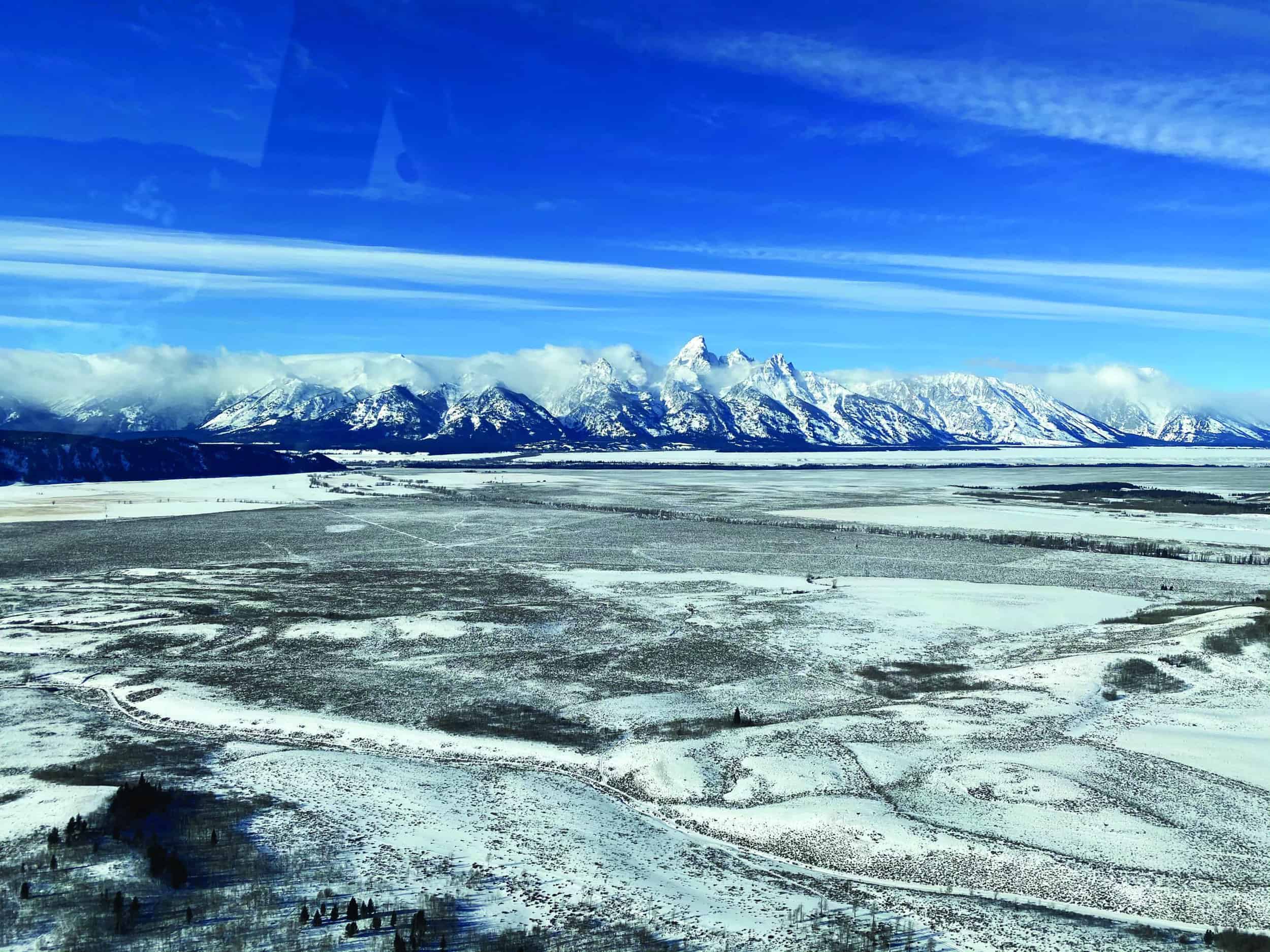Read The
Current Issue
Up in the Air, with the Tetons Over There
Scenic flights via chopper, Cessna, and hot-air balloon have their ups and downs.
// By Mike Koshmrl

It’s undeniably compelling to be able to hover, glide, or float over a valley that’s bounded on one side by the Teton Range, which has a vertical relief of more than one mile, and cut by a mighty river like the Snake. Too compelling, and too incompatible with the Jackson Hole experience, the community has judged at times. When Jackson Hole resident Tony Chambers sought to bring scenic helicopter tours back to Teton County after a two-decade absence of such flights, he was met with swift backlash and across-the-board opposition. Just about everyone who weighed in—be it Grand Teton National Park retirees, Jackson Hole Airport’s board of directors, or local residents and elected officials—was not fond of the prospect of adding the cacophony of helicopter clatter to a region that’s still known best for its wild, quiet places.
But Chambers had the Federal Aviation Administration on his side, and he prevailed in that fight. There’s been a market for the sightseeing tours he offers in his red Robinson R-44 helicopter, an aircraft that has been visible and audible over central Jackson Hole many days since Wind River Air started operations in summer 2020.
Chambers’s is the most center stage and contentious type of aerial tour that offers views of the Teton Range, but it is not the only one. For decades, pilots aboard Teton Aviation’s light fixed-wing aircraft have escorted tourists aerially over Teton Valley and the west slope of the Tetons. And from mid-May into September, on mornings when weather cooperates, the Wyoming Balloon Company uses hot air to fly groups of sightseers over ranchland just south of Teton Village. Jackson Hole magazine grabbed a seat for a writer (yours truly) and photographer aboard each of the three vessels, and these were our experiences. (FYI: Balloon trips are only an option between May and September.)
Planes
Surely, a flight in a little airplane isn’t the type of experience that’s going to tug at your heartstrings, right? Wrong. Midmorning on a Thursday, pilot Colleen Schooley jostles the yoke of her Cessna 172-XP just enough to “wave” her wings at her kids, who are somewhere down below on the slopes of Grand Targhee Resort. Good luck not being touched.
Schooley, Teton Aviation’s director of flight operations and chief instructor, typically heads southbound on her aerial tours after taking off from Driggs-Reed Memorial Airport. Motoring smoothly along at about 110 miles an hour, I am struck by how much agriculture remains on the west side of the Tetons. Center pivot irrigation systems, hayfields, horses, and even some cattle still abound in the 13,000-person, fast-growing valley on the west side of Teton Pass.
At the head of the Teton Valley, the headwaters of the Teton River mesmerize. The coiled river, the basin’s largest, seemingly appears from out of nowhere at the confluence of some modest springs and streams. By the time our prop plane climbs to 9,500 feet, we can see clear over Pine Creek Pass to Swan Valley and the Snake River’s South Fork. “When you get high enough, you can see the Snake River on both sides of you,” Schooley says.
Teton Aviation’s standard route on its scenic flights is to stay outside of Grand Teton National Park while paralleling its western boundary. We circle to climb up to 12,000 feet and then go north toward the Tetons. On a clear day, the views are incredible. Schooley plays the part of guide, pointing out geographic features: Ski Lake, Housetop Mountain, Granite Canyon, and so much more. There is Jackson Hole Airport, Blacktail Butte, and other defining features of Jackson Hole. Shortly after sighting Jackson Lake, near Green Lakes, we swing back south. “Not much in the way of trails past this point,” Schooley says.
As we glide down toward the Driggs runway after about an hour in the air, Schooley points out Teton Valley’s empty cul-de-sacs and “zombie subdivisions,” which are neighborhoods under construction that was abruptly halted when the Great Recession struck in 2007. “Now, in the last two years, there’s construction going on all over these,” she says. Teton Valley is changing, and fast. And perhaps it’s most evident from above. tetonaviation.com; $395 for one to three passengers
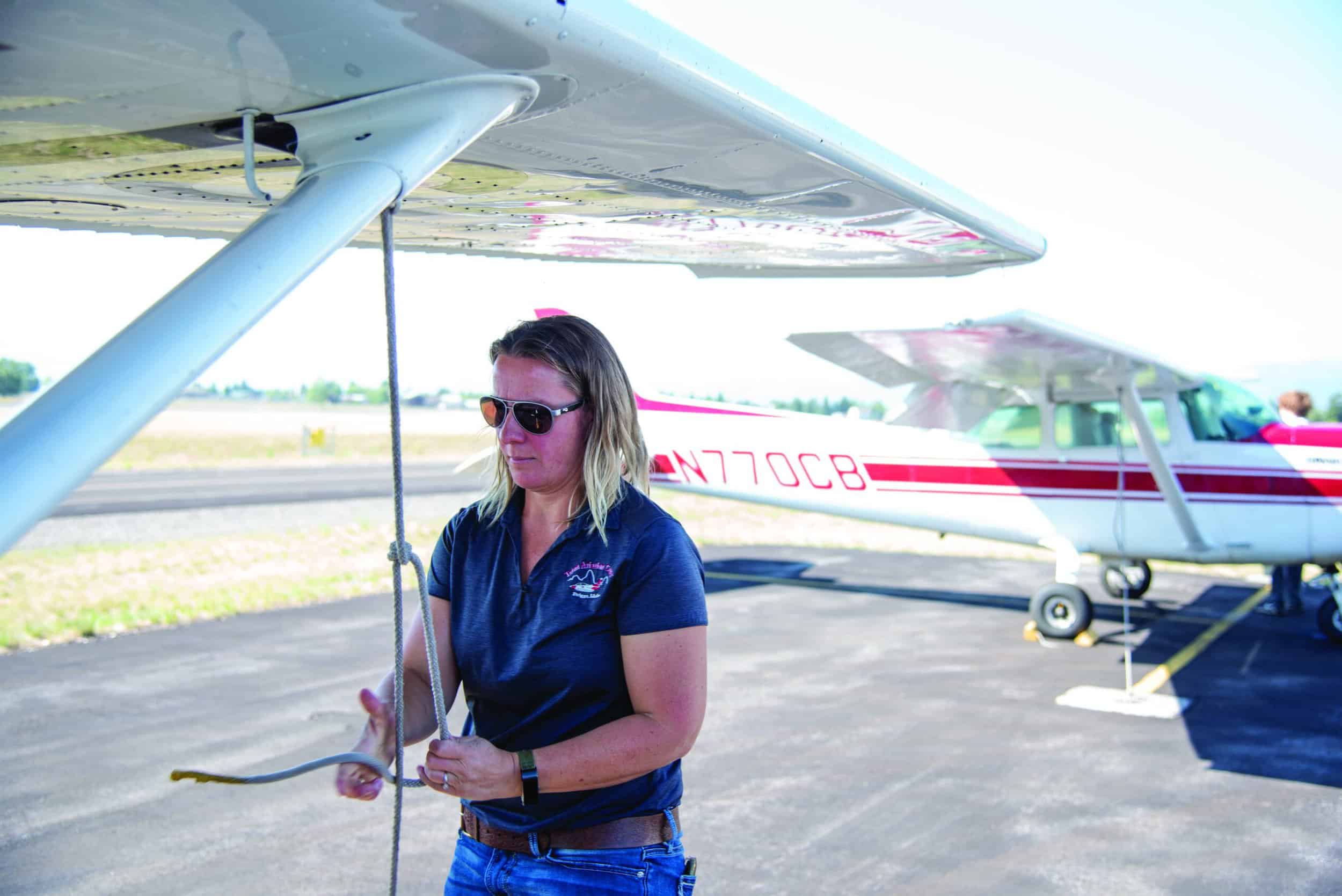
PROS
- You cover a lot of ground and get very good views of the Tetons.
- It’s the most economical option for a family.
CONS
- The drive to Driggs.
- Cloudy days can put the kibosh on a flight (it happened to the first flight we had planned).
Helicopter
Tony Chambers explains the concept of “wake turbulence” as a private jet roars down the Jackson Hole Airport’s runway in Grand Teton National Park (GTNP). Just like with a boat in the water, the turbulence left behind by the wake of a plane disturbs the air. “It could flip us very easily,” Chambers says. Fortunately, we are still at ground level aboard Chambers’s red Robinson R-44 helicopter as the private plane comes to a stop.
The nose of Chambers’s chopper always faces the wind when taking off, and on this day that means heading south. Once at speed and altitude, we straightline it for the boundary of GTNP. Overflying the Gros Ventre River and the very northern reaches of the National Elk Refuge about 1,000 feet above ground level, I marvel at backwater ponds that I didn’t know existed. There are many familiar features too, though I am seeing them from an all-new angle. “Everybody who goes on these flights thinks they’re the coolest thing,” Chambers says. “It’s such a different perspective. Aviation makes the world small.”
In minutes, we hover to within eyeshot of the sprawling Gros Ventre Campground and then Kelly, a socially diverse hamlet that’s home to biologists, National Park Service employees, and yurt dwellers. Without prompting, Chambers broaches the controversy of his operation. “I try to give Kelly as wide of a berth as I can,” he says. “I haven’t really gotten any complaint calls from them in a while, so that’s good.”
Chambers’s standard route traces the eastern boundary of GTNP. A GPS application that displays his whereabouts on his iPhone shows that we are outside the park. Instead, we are overflying the Bridger-Teton National Forest and on top of mountainsides where I, as a local, have spent ample time skiing, hiking, and hunting. Along the east slopes of Shadow Mountain we double back, coming close to the rounded 8,256-foot-high summit. A popular summer and fall camping area, Chambers says, “there’s always someone up at the top,” during those seasons.
Later that same day I fly with Chambers, I go out near the base of Shadow Mountain. By happenstance, Chambers is out on another scenic flight at that time. I never see his red helicopter, but there is no mistaking the clatter of it sounding off from somewhere sight unseen in the direction of Shadow Mountain’s summit. Judging by my own experience, all aboard are having a swell time. But for the hundreds of folks in earshot on ground at any one time, it is likely a different story. windriverair.com; $240 per person for a 30-minute flight, $325 per person for 45-minute flight, $420 per person for 1-hour flight; two-person minimum, all flights
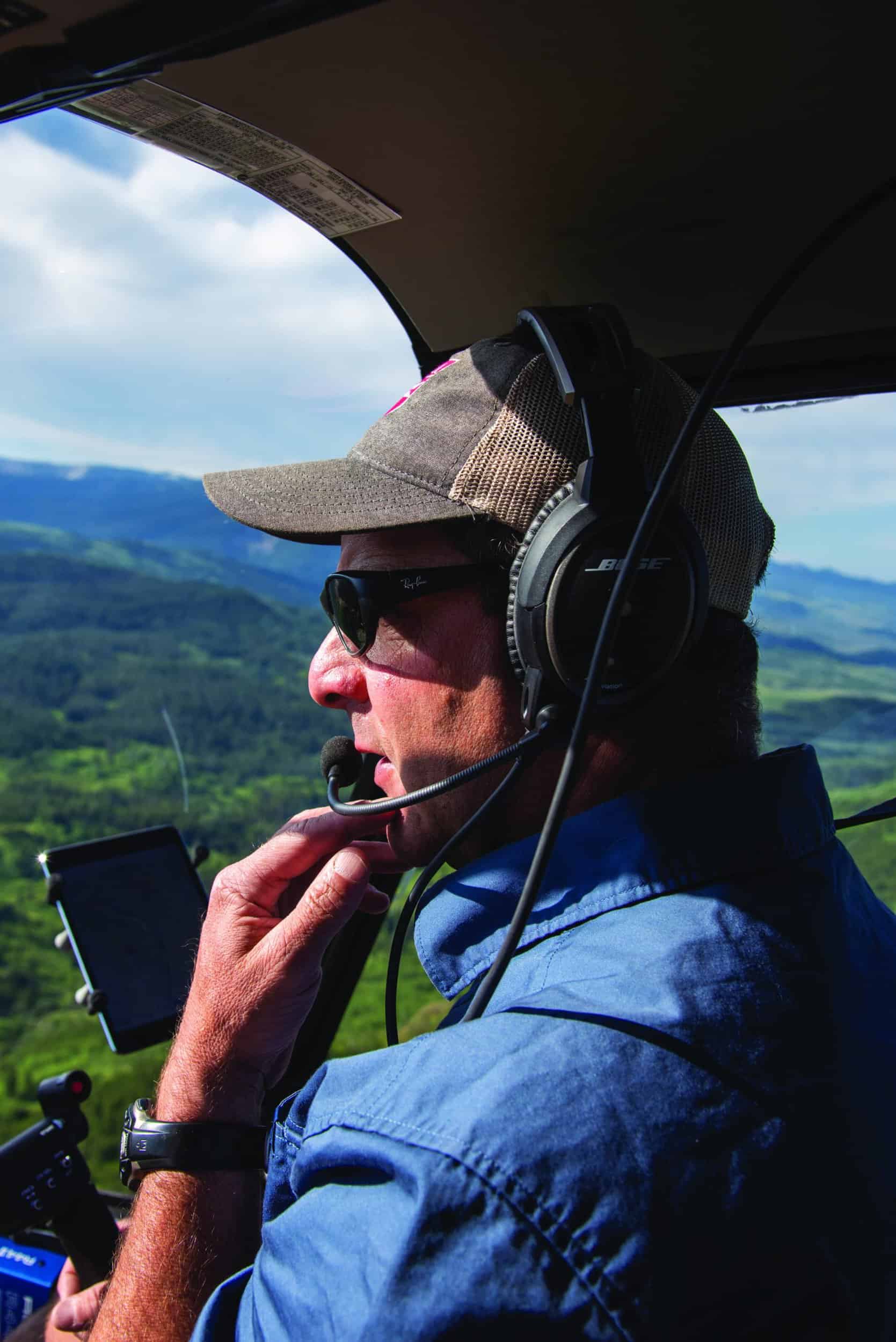
PROS
- Wind River Air’s helicopter flights are relatively low and slow, affording great views of the ground below.
- Pinched for time? A flight takes a half hour.
CONS
- The guilt factor of disturbing a lot of people down below,because helicopters are noisy.
- Teton views are distant given Wind River Air’s flight restrictions.
Hot-Air Balloon
Twenty or so Jackson Hole tourists gawk and snap photos well before the hot-air balloons they’d soon board even get off the ground. A Wyoming Balloon Company staffer runs a blower that inflates the larger of the two colorful balloons, decorated with a giant painting of a bull elk. “Ever been on a hot-air balloon before?” he asks. I tell him it’s a first. “Awesome,” the man says. “You’ll love it.”
Andy Breffeilh pilots our balloon, a job he mastered over 32 years in the air. At 7:13 a.m. on a still Saturday morning, his propane-fueled burners shoot enough hot air into the balloon basket, carrying a ton or so of humans, that it eases off the Earth. Breffielh is full of jokes and balloon puns, a brand of humor that’s hard not to enjoy. “Please listen carefully to my safety message,” Breffeilh says. “Don’t get out. That is all.”
By blasting the burners and pulling cords that manipulate panels and valves, Breffeilh spins the balloon and lowers it and shoots it—and us—skyward with ease. When flames are flying, everyone reflexively veers their head away, like you would when too close to a campfire.
To everyone’s amusement, Breffeilh at one point executes a “ding and swing,” giving the pastureland grazed by cattle a love tap.
Quickly we learn that steering the balloon directionally is a bit more of a challenge and at the whims of winds at different elevations. We putter around pretty low to the ground at between three and five miles per hour, generally headed south. The maintained blasts of hot air shoot us skyward to 8,200 feet in elevation. Like that we are headed north and traveling twice as fast. “We’re floating like a cork on that colder, denser air,” Breffeilh explains.
After crossing Highway 390 headed toward the Snake River, we begin to lose elevation. It is clear we are not headed back west, toward where we took off. Breffeilh, using binoculars, has been looking for elk for much of the hour-long flight but had only managed to find a few…until we are about to touch down in an opening of aspens on the Snake River Ranch. About 30 wapiti are right beneath where we’re about to touch down. “Look at that, look at the babies,” Breffeilh says. “I’m sorry, folks. When I get a chance to land right next to the elk, I can’t help myself.” wyomingballoon.com; $425 per adult, $325 per child for a group ride; private rides also available JH
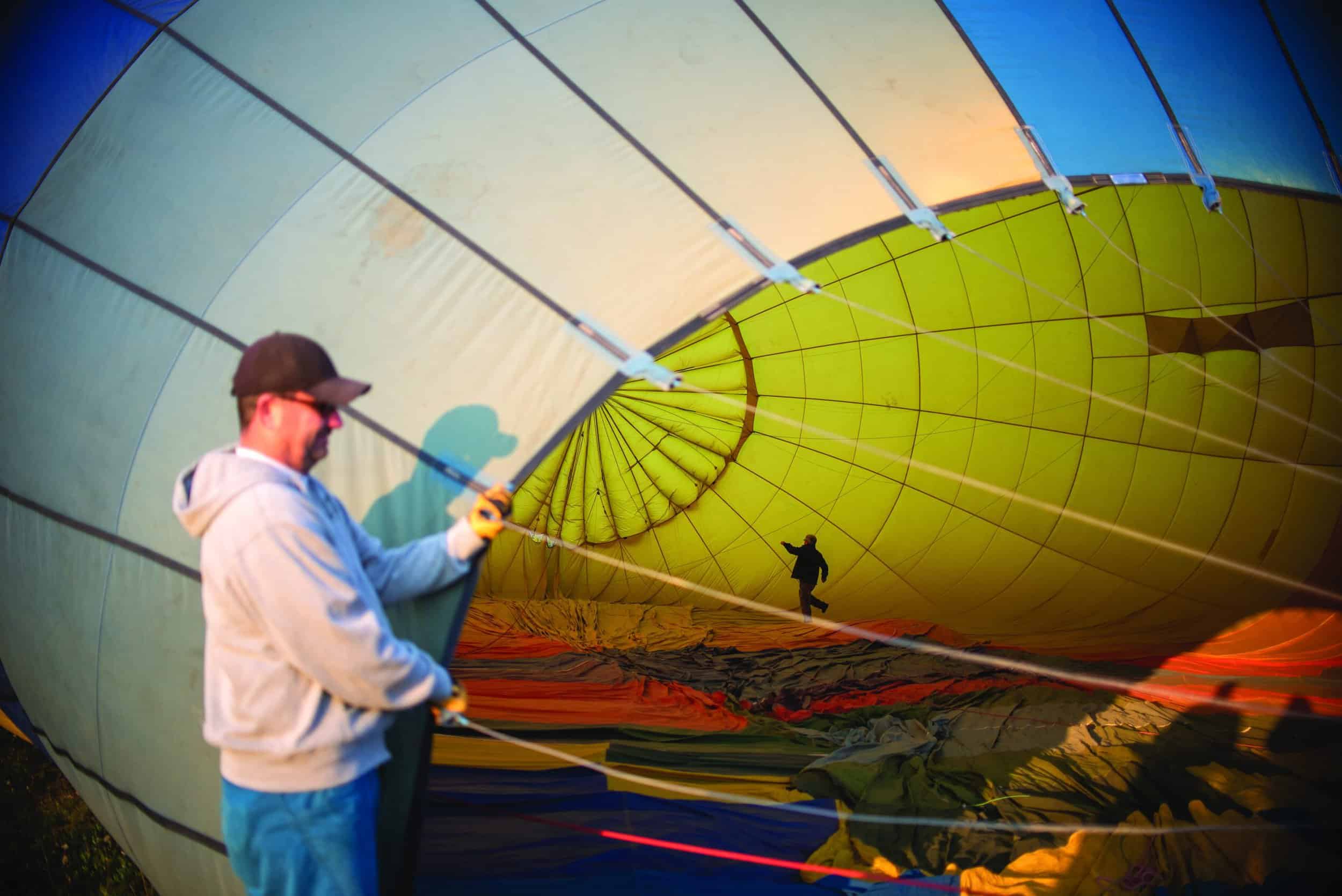
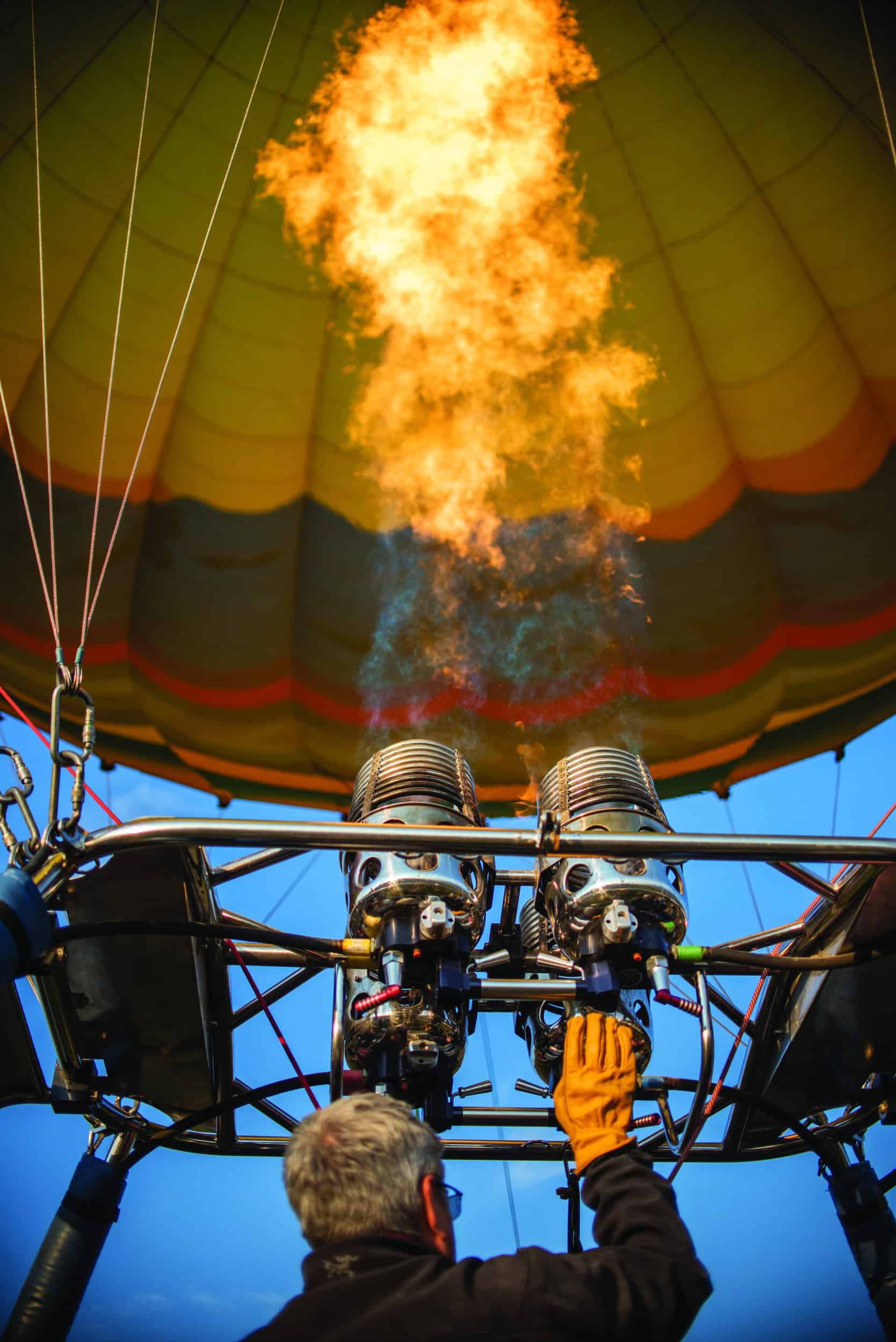
PROS
- It’s quiet. In between blasts of the burners, hot-air balloons are nearly silent.
- Flights are low and slow enough to spot wildlife like elk and moose.
CONS
- Balloon flights don’t happen in the winter,so taking one will necessitate a return trip between May and September.
- Relatively, balloons don’t cover a lot of ground.
- The up and down and spinning all around (combined with the smell of propane) can cause motion sickness.

